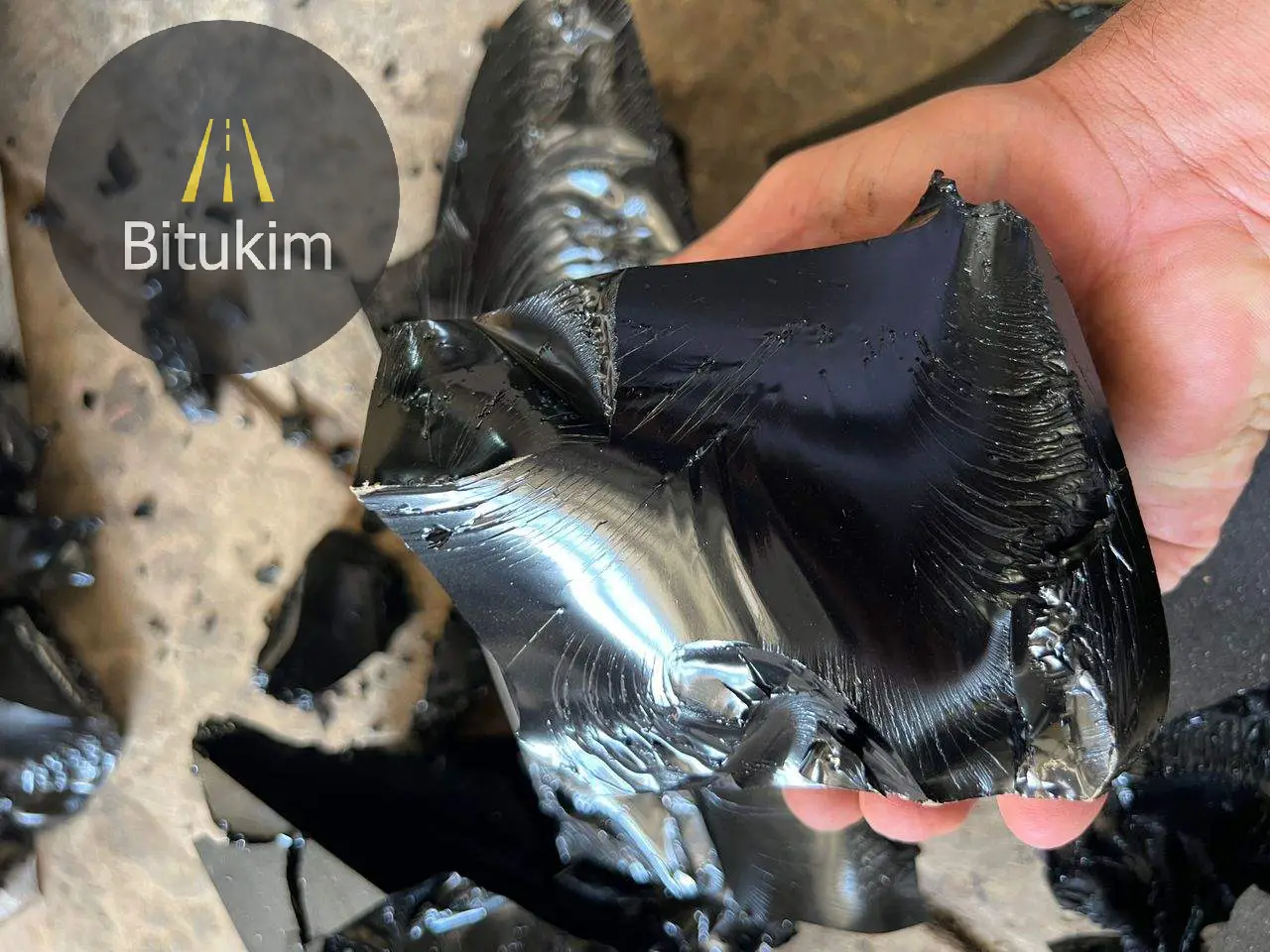Oxidized Bitumen 110/30, commonly known as blown bitumen 110/30, is a specially formulated type of bitumen that undergoes a controlled oxidation process. This process involves blowing air through bitumen at elevated temperatures, which significantly alters its physical properties.
In the following sections, we will delve deeper into the world of Oxidized Bitumen 110/30, exploring its production process, applications, and the role it plays in shaping our infrastructure.
About Oxidized Bitumen 110/30
Oxidized Bitumen 110/30 or Blown Asphalt 110/30 or Air-Rectified Bitumen is a type of modified bitumen that is obtained after treating hot air on penetration-grade bitumen in temperature and pressure-controlled conditions. The treatment changes the physical and chemical properties of the bitumen by making it tougher, resistant to temperature, and appropriate for use in the industries.
Significant Numbers in 110/30
110°C : Softening Point: The elevated softening point shows that the bitumen has stability and maintains its form at elevated temperatures, perfect for hot weather and high-temperature applications.
30 dmm : Penetration Value: The low value represents greater hardness and less susceptibility to deformation.
Oxidized Bitumen 110/30 is thermally resistant with low penetration and higher durability, hence its use in harsh conditions. It is viscous, highly adhesive, and resistant to water, aging, and oxidation. It is ideal for waterproofing, insulation, industrial adhesion, and road construction.
Manufacturing Process of Oxidized Bitumen 110/30
Raw Material Selection: Quality vacuum residue is chosen as base bitumen.
Heating: Bitumen is heated from 240°C to 260°C in oxidation reactors.
Air Blowing: Heated air is blown over the bitumen, inducing chemical reactions that improve softening point and reduce penetration.
Cooling: The oxidized bitumen is cooled to prevent over-oxidation.
Filtering: Impurities are removed to ensure uniform product quality.
Blending: Additives may be added for certain applications.
Storage & Packaging: Stored in hot tanks and packaged in bags, drums, or blocks.
Quality Control: Strict testing (penetration, softening point, viscosity, etc.) is done to meet industry standards.
Applications of Oxidized Bitumen 110/30
Oxidized Bitumen 110/30 is used extensively by different industries due to its excellent durability, high softening temperature, and water as well as temperature resistance. In the building sector, it is a crucial product for waterproofing as well as roofing systems, providing a robust moisture-proof barrier along with thermal stress resistance. Its heat stability at elevated temperatures renders it especially suited for use in warm climates where standard bitumen will become soft or deformed.
In road construction, it is used in asphalt modification to enhance pavement resistance to rutting, cracking, and aging, leading to long-term performance under severe traffic loading. It is also a primary component in pavement sealants and coatings that protect surfaces from UV degradation and water damage.
Oxidized Bitumen 110/30 is utilized in the oil and gas industry as a covering over pipelines, shielding them from corrosion and environmental hazards. It is applied in the electrical and mechanical industries for insulation due to its high dielectric strength and water resistance. It is also commonly used to prepare joint fillers and expansion joints in concrete because of its flexibility and safe sealing under thermal movements.
Its application in the production of roofing felts, membranes, mastics, and industrial adhesives further attests to its versatility. Due to its improved adhesion, thermal stability, and chemical resistance, Oxidized Bitumen 110/30 continues to be an essential product in projects requiring high-performance, long-lasting applications.
Container Loading Capacities:
25kg PP Bags (Shrink-Wrapped & Palletized): ~23 tons / 20ft container
25kg Carton Boxes: ~22 tons / 20ft container
Handling & Safety of Oxidized Bitumen 110/30
Ventilation: Use gloves, goggles, safety shoes, and protective clothes
Protective Equipment: Handle in well-ventilated areas to avoid inhaling the fumes
Fire Protection: Keep away from open fire; use correct fire extinguishers
Temperature Control: Avoid overheating for coking or degradation
Conclusion
Oxidized Bitumen 110/30 is an industrial-grade, high-performance bitumen specifically formulated for construction and industrial applications where water resistance, thermal stability, and durability are essential. The product’s diverse applications range from roofing systems and pipe coatings to road construction and makes it an industry favorite due to its application versatility.
Specification of Oxidized Bitumen 110/30
| Bitumen 110/30 | Test method | Unit | Specification |
|---|---|---|---|
| Specific gravity @25/25 C | ASTM D70 | (Kg/m3) | 1.05 approx. |
| Penetration @ 25°c | ASTM D5 | mm/10 | 10/25 |
| Softening point °c | ASTM D36 | °C | 100/120 |
| Loss on heating(wt) % | ASTM D6 | Wt. % | 0.2 max |
| Flashpoint c | ASTM D92 | °C | 230 min |
| Solubility is CS2(wt) % | ASTM D4 | Wt. % | 99 max |
| Ductility @ 25 °c | ASTM D113 | 2 min |


